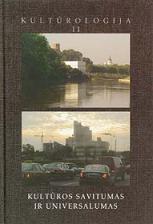DAILIŲJŲ AMATŲ GAIVINIMO MODELIS TARPUKARIO LIETUVOJE: KAIMYNŲ PATIRTIS
PATTERN FOR THE REVIVAL OF HANDICRAFTS IN INTER-WAR LITHUANIA: THE EXPERIENCE OF NEIGHBOURS
Author(s): Lijana ŠatavičiūtėSubject(s): Customs / Folklore
Published by: Lietuvos kultūros tyrimų
Keywords: Inter-War Lithuania; handicrafts; folk traditions; Chamber of Agriculture
Summary/Abstract: This article is devoted to the rural handicrafts development programme that was carried out in Lithuania in the 1930s with the efforts of the Chamber of Agriculture in Kaunas. The developers of the traditional handicrafts programme – largely the Home Industries staff of the Chamber of Agriculture – drew experience from the enthusiasts of folk art development in other countries. With the aim of examining the impact of home industry organizators in Sweden and elsewhere on Lithuania’s cultural policy, this article overviews the activities that were undertaken seeking to revive folk art traditions in Russia, Germany, East Prussia (Lithuania Minor), Poland, and Scandinavian countries from the second half of the 19th century. A conclusion is made that the production of handicrafts and the activity of small businesses based on folk traditions have nowhere been left adrift. In organizing mass production of traditional handicrafts in Lithuania, special attention was given to labour organization in home industries, supply of masters with material and instruments, sales of goods, and measures for the spread and preservation of folk traditions. For the most part, Lithuania borrowed from the experience of Sweden, but some elements were adopted from other countries as well. In Sweden itself, highly influential was the practice of German handicraft schools and American art workshops. It is evident that from the 19th century progressive ideas of traditional crafts development were travelling from one country to another where they were assimilated and absorbed. Among the major points of such programmes were the establishment of museums and schools, organization of courses, and instruction of rural artists. Collection of ethnographic pieces and the programmes for folk art retention were universal and so widespread that, in inter-war Lithuania, there was no need to examine what countries the ideas of ethnographic studies and folk art promotion were originating from.
Journal: Kultūrologija
- Issue Year: 2004
- Issue No: 11
- Page Range: 242-254
- Page Count: 13
- Language: Lithuanian

